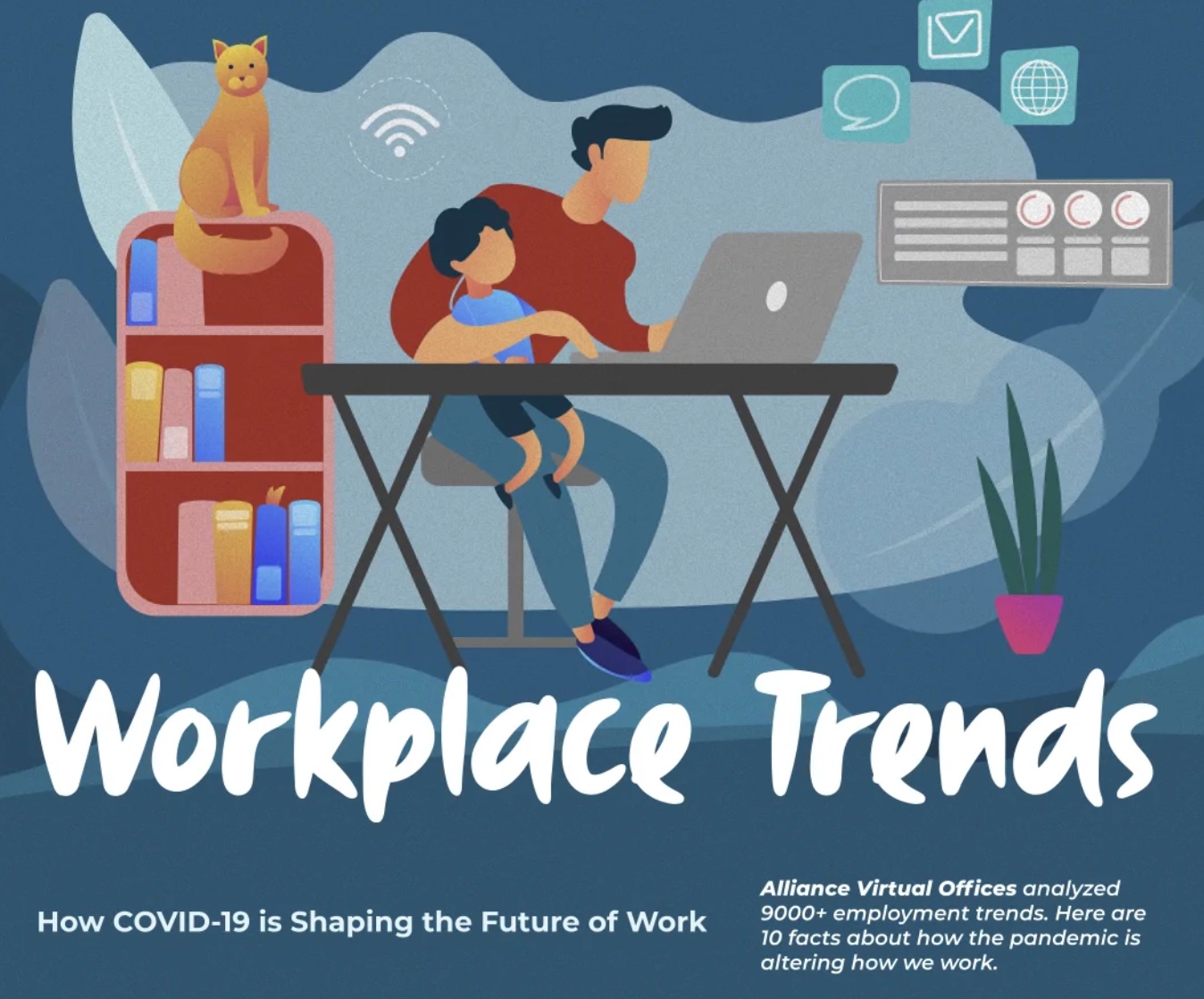We analyzed 9,000+ employment trends. Here’s how the pandemic is altering how we work.
We analyzed employment trends from before the pandemic through expectations for a post-COVID workplace. We sought to answer the question: What shape will the future of work take?
Specifically, we investigated the habits of remote workers, the future plans of employers, and what some of the biggest companies in the world are doing to adapt to remote work.
References and methods for this study can be found in the Methods and Procedures PDF.
We know you’re ready for the numbers, so let’s dive in.
Our key findings are as follows:
1. Many factors impact the schedules of those working from home, but hangovers caused 26.3% of remote workers to change their working hours during the COVID-19 pandemic.
2. Priorities differ among remote workers, but they reportedly value “being near nature” over “being near family.”
3. Tech, Banking, and … the State of Massachusetts? Hybrid and “Remote First”office models are being widely adopted.
4. When given the option to work from home, only 4% of workers chose to work in the office.
5. 1 out of 3 employers expect their workforce to be at least 40% remote one year post-COVID-19.
6. 55% of employers expect their employees will work remotely at least one day per week post-COVID.
7. Some data suggests remote work has little negative impact on teamwork and workplace diversity.
8. Heavy cell phone usage and oversleeping are the top disruptions to consistent remote employee working hours.
9. A hybrid workplace model is preferred by 68% of workers.
10. 87% of companies will change their real estate strategy to adapt to remote work within the next year.
Only 4% of workers choose the office over remote work
Not every business has been able to operate during the pandemic with a fully remote workforce. Businesses that primarily rely on face-to-face interactions, such as restaurants, brick and mortar retail stores, and many small businesses, have had to massively adapt or close their doors for good. From Fortune 500 companies to your local mom and pop shops, businesses everywhere have had to adapt to the new work-from-home norm or forever close their doors.
Tons of studies are available to show that employees prefer to work from home, but a study by Statista shows that only 4% of workers chose to work in the office when they had the choice (Statista Research Department, 2020). This percentage may rise once COVID fears ease, but in the meantime, these results show how strongly workers prefer having the option of flexible remote-first models.
Please click on the image below (or click here) to go to the full article and infographic.

LegalReader thanks our friends at Alliance Virtual Offices for permission to publish this excerpt of their study. The original is found here.


Join the conversation!